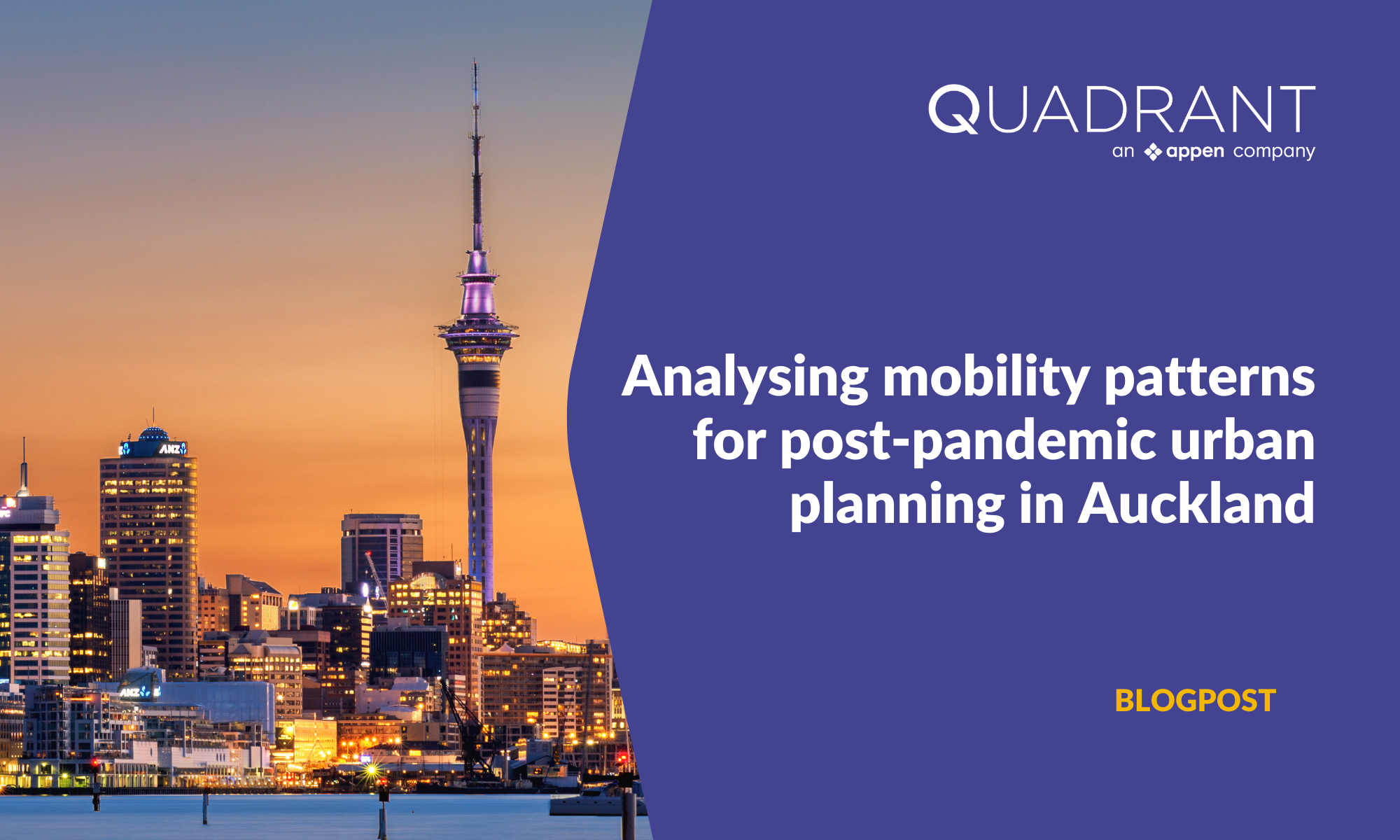Every city in the world has a particular cadence: a rhythm and pace established by the movement of its people over an extended period. Analysing this movement reveals vital information about a city’s predominant economic activities and social dynamics – among other distinguishing traits. A great way to analyse such movement is to leverage mobile location data.
Mobile location data has a variety of uses in research and academia. Academics who work with transit authorities use location data – along with information on public transport infrastructure – to identify underserved areas and make suggestions for more extensive coverage. Such data supports relief efforts in disaster prone areas and provides insight on migration caused by environmental issues (i.e., the mass movement of people away from coastal regions in Bangladesh due to rising sea levels). Location data is also instrumental in determining the utilisation of public services in order to improve the quality and coverage offered by such services.
This type of data also provides a means of exploring the ways in which mobility patterns are impacted by world-changing events, like the Covid-19 pandemic. Once the symptoms and mode of transmission of the virus were identified, many governments imposed regulations to curb the spread of the disease. This fundamentally changed the daily lives of people as they encountered limitations on where they could go, where they could work, and how they could interact with one another.
Having conducted similar mobility-oriented studies in Singapore in the past, Professor I-Ting Chuang (University of Auckland) and Qingqing Chen (University at Buffalo) investigated how lockdowns in Auckland, New Zealand, altered human mobility patterns across the city by leveraging Quadrant’s mobile location datasets. The aim of the project was to employ mobile location data for identifying vibrant locations in Auckland. Another key goal was to utilise this knowledge for suggesting improvements to these (as well as similar) locations in order to attract more visitors.
The researchers executed three primary analyses:
- Partitioned Auckland into 300-meter grid cells, identified where people resided, and constructed home-to-destination networks.
2. Utilised mobile location data to determine the density of people within a 1 kilometre radius.
3. Used knowledge of where users came from to calculate the diversity of visitors across various locations in Auckland.
The data they analysed was generated 2 weeks before and after the first, Level 4 lockdown (March 25th) and the second, Level 3 lockdown (August 12th). Additionally, they wanted to employ diversity analysis to see whether the utilisation of urban hot spots had changed in response to pandemic-induced restrictions.
The diversity analyses of Period 1 and Period 2 showed a significant decrease in the diversity of visitors across all locations. The findings showed that there was more localised activity in Period 2 than in Period 1 – most likely due to the relative easing of restrictions in the second lockdown. Additionally, a ratio analysis was executed to contrast the changes in diversity in Period 1 and Period 2 to discern how much diversity had been restored. 
The figure above represents the diversity-distribution across Auckland in Period 1.

The figure above represents the diversity-distribution across Auckland in Period 2.
The results demonstrated the fact that although some places had recovered or even surpassed their pre-lockdown diversity in terms of visitors, most had not. There were two categories of recovered areas: essential urban programs (schools, hospitals, highway ramps etc.) and green open spaces (parks and other outdoor attractions).

The maps above represent locations that did not recover their diversity (on the left) as well as locations that recovered their diversity (on the right).
In addition to providing data-driven insights on urban planning for post-pandemic Auckland, the analyses can also be applied to other cities. In time, the researchers intend to carry out similar studies across different temporal frames and want to extensively document the characteristics of locations that recovered quickly.
To learn more about how these researchers harnessed Quadrant’s mobile location data to fulfill their research objectives, download the full case study.




